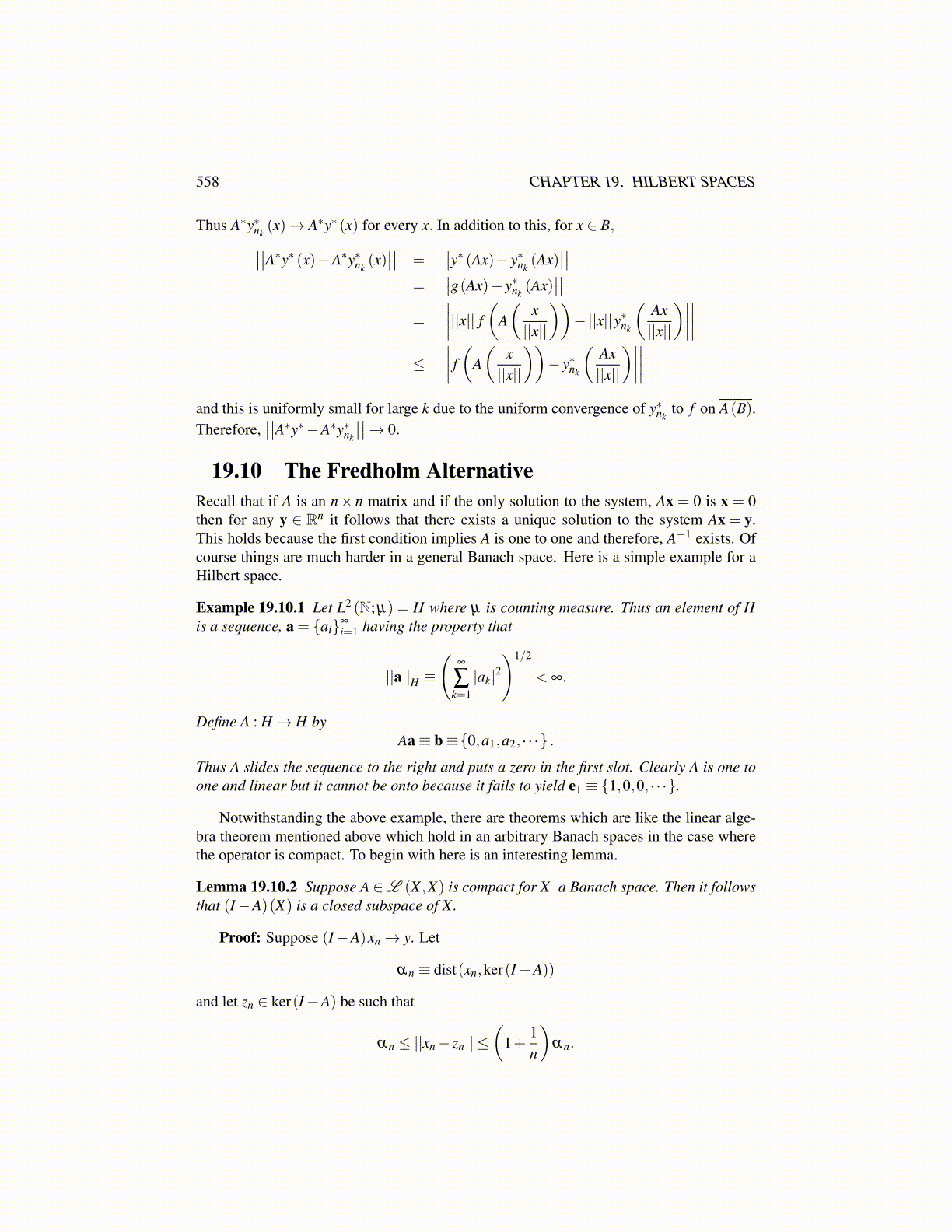
558 CHAPTER 19. HILBERT SPACES
Thus A∗y∗nk(x)→ A∗y∗ (x) for every x. In addition to this, for x ∈ B,∣∣∣∣A∗y∗ (x)−A∗y∗nk
(x)∣∣∣∣ =
∣∣∣∣y∗ (Ax)− y∗nk(Ax)
∣∣∣∣=
∣∣∣∣g(Ax)− y∗nk(Ax)
∣∣∣∣=
∣∣∣∣∣∣∣∣||x|| f (A(
x||x||
))−||x||y∗nk
(Ax||x||
)∣∣∣∣∣∣∣∣≤
∣∣∣∣∣∣∣∣ f (A(
x||x||
))− y∗nk
(Ax||x||
)∣∣∣∣∣∣∣∣and this is uniformly small for large k due to the uniform convergence of y∗nk
to f on A(B).Therefore,
∣∣∣∣A∗y∗−A∗y∗nk
∣∣∣∣→ 0.
19.10 The Fredholm AlternativeRecall that if A is an n× n matrix and if the only solution to the system, Ax = 0 is x = 0then for any y ∈ Rn it follows that there exists a unique solution to the system Ax = y.This holds because the first condition implies A is one to one and therefore, A−1 exists. Ofcourse things are much harder in a general Banach space. Here is a simple example for aHilbert space.
Example 19.10.1 Let L2 (N; µ) = H where µ is counting measure. Thus an element of His a sequence, a = {ai}∞
i=1 having the property that
||a||H ≡
(∞
∑k=1|ak|2
)1/2
< ∞.
Define A : H→ H byAa≡ b≡{0,a1,a2, · · ·} .
Thus A slides the sequence to the right and puts a zero in the first slot. Clearly A is one toone and linear but it cannot be onto because it fails to yield e1 ≡ {1,0,0, · · ·}.
Notwithstanding the above example, there are theorems which are like the linear alge-bra theorem mentioned above which hold in an arbitrary Banach spaces in the case wherethe operator is compact. To begin with here is an interesting lemma.
Lemma 19.10.2 Suppose A ∈L (X ,X) is compact for X a Banach space. Then it followsthat (I−A)(X) is a closed subspace of X.
Proof: Suppose (I−A)xn→ y. Let
αn ≡ dist(xn,ker(I−A))
and let zn ∈ ker(I−A) be such that
αn ≤ ||xn− zn|| ≤(
1+1n
)αn.